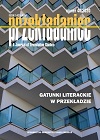DZIKIE BOHATERKI? PROBLEMATYKA PŁCI KULTUROWEJ I GATUNKU LITERACKIEGO W PRZEKŁADACH NORTHERN LIGHTS PHILIPA PULLMANA
SAVAGE HEROINES? THE TREATMENT OF GENDER AND GENRE IN TRANSLATIONS OF PHILIP PULLMAN’S NORTHERN LIGHTS
Author(s): Karen Seago, Lavinia SpringettContributor(s): Joanna Sobesto (Translator)
Subject(s): Gender Studies, Studies of Literature, Translation Studies
Published by: Wydawnictwo Uniwersytetu Jagiellońskiego
Keywords: Philip Pullman; Nothern Lights; fantasy; trasgressive child; gender in translation;
Summary/Abstract: Philip Pullman’s Northern Lights is the first instalment of his award-winning trilogy His Dark Materials. In this alternate-worlds fantasy and children’s literature classic, Lyra and her daemon Pan are catapulted from the relative stability of Oxford to negotiate an increasingly threatening world in a quest to protect free will from cataclysmic adult zealotry. According to prophecy, Lyra is the chosen one; she conforms to the tropes of the fantasy quest performing the paradigmatic steps of the saviour hero. Pullman’s protagonist transgresses and subverts the stereotypical expectations of the fantasy heroine whose generic destiny is coded in enclosure, passivity and endurance. Lyra is also a coming of age story and here again Pullman’s conceptualisation does not conform to the female pattern in both fantasy and children’s literature where marriage functions as the marker for maturity. Character is one of the two defining traits of fantasy (Attebery 1992) and it performs a didactic function in children’s literature. Characterisation is created through the reader’s interpretation of textual cues: narratorial description; direct and free-indirect speech. Lyra’s character subverts fantasy stereotypes and depicts a transgressive child who does not conform to gender role expectations. Genre translation tends to adapt the text to target culture norms and the didactic and socialising impetus of children’s literature has been shown to prompt translation strategies which comply with the receiving culture’s linguistic and behavioural norms. In this paper, we analyse the rendering of character cues in the French, German and Italian translations of Northern Lights: 1. Is the transgressive trope of a) the heroine following the male hero paradigm and b) the coming of age pattern maintained or normalised to conform to genre expectations? 2. Is Lyra’s transgressive character rendered in translation or is it adapted to comply with didactic expectations of behaviour? 3. Are there different notions of the role and function of children’s literature in the target environments and do these impact on translation strategies?
Journal: Przekładaniec.
- Issue Year: 2020
- Issue No: 40
- Page Range: 22-50
- Page Count: 29
- Language: Polish

